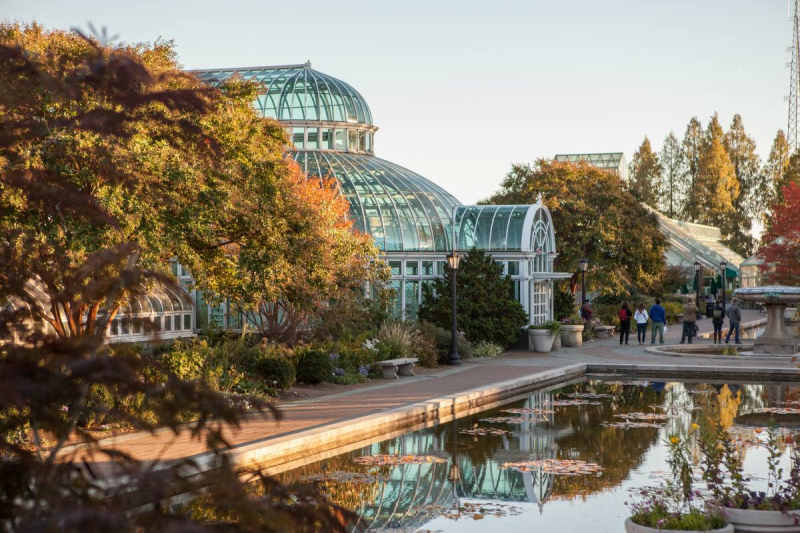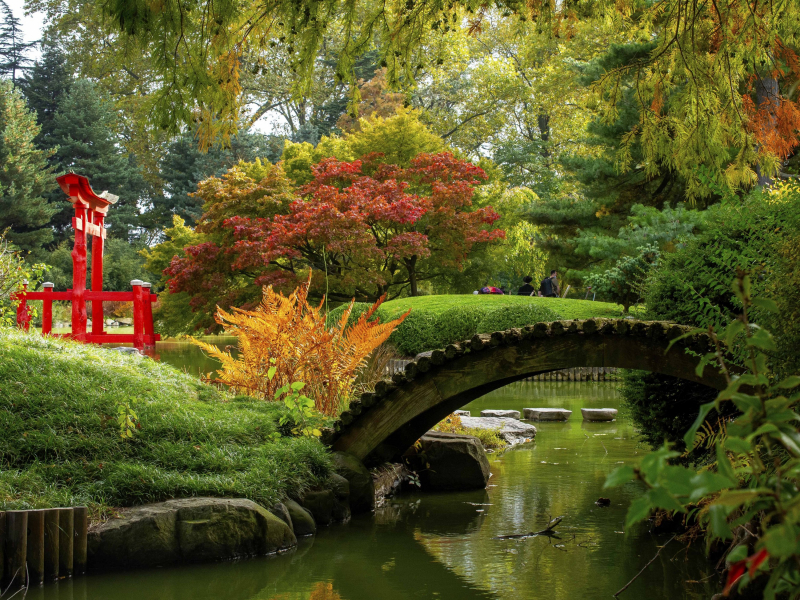The Brooklyn Botanic Garden
The Brooklyn Botanic Garden is a botanical garden in the New York City borough of Brooklyn. It was built on land from Mount Prospect Park in downtown Brooklyn, next to Prospect Park and the Brooklyn Museum, in 1910. The 52-acre (21-hectare) garden features over 14,000 plant species and receives over a million visitors each year. It features a number of specialist "gardens within the Garden," plant collections, the C. V. Starr Bonsai Museum, three climate-themed plant pavilions, a white cast-iron-and-glass aquatic plant house, and an art gallery.
As the city consolidated in 1897, legislation set aside 39 acres (16 ha) for a botanic garden, which opened in 1910. Originally known as the Institute Park, the park was operated by the Brooklyn Institute of Arts and Sciences, which contained the Brooklyn Museum, Brooklyn Children's Museum, and Brooklyn Academy of Music until the 1970s. The Brooklyn Botanic Garden debuted on May 13, 1911, with the Native Flora Garden being the first established portion.
In 1912, Harold Caparn was named landscape architect, and he designed the majority of the remaining grounds, including the Osborne Garden, Cranford Rose Garden, Magnolia Plaza, and Plant Collection, during the next three decades. That year, construction on the Laboratory Building and Conservatory began, and the structure was dedicated in 1917. McKim, Mead & White commissioned William M. Kendall to design the building in the Tuscan Revival style. It was declared a New York City Landmark in 2007 after being renamed the Laboratory Administration Building.
Founded: in 1910
Location: 990 Washington Avenue, Crown Heights, Brooklyn, New York 11225, United States
Land area: 52 acres (21 ha)













